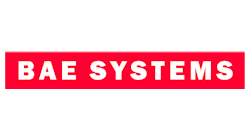BAE Systems Announces Production of Company’s 8,000th Hybrid Electric Drive System
BAE Systems, a leading provider of hybrid propulsion and electric solutions, has achieved a major milestone with the production of its 8,000th series hybrid electric drive system for transit buses. In the last two years, BAE Systems has delivered 3,000 electric platforms that save fuel and reduce emissions, double the number the company shipped in the prior four years.
“The continued high demand for these systems is driven by the flexibility of the Series-E product line,” said Bob Lamanna, director of global transit sales and service at BAE Systems.
“The line provides the reduced and zero-emission travel that transit agencies are looking for without the infrastructure challenges presented by fully electric solutions.”
BAE Systems’ flagship Series-E system not only provides hybrid electric propulsion, but also operates all accessories on vehicles with electric power. The system offers stop/start technology as well that eliminates emissions while the bus is stopped. This technology has now advanced to give an operator up to 35 percent engine-off operation without needing to stop and charge the vehicle’s batteries. With an on-board generator, the bus is available for service 24/7 and there is no need for charging systems or scheduling time to use them.
“We all feel strongly the full-electric solution is coming, but there are also a lot of steps we have to take to get us there,” said Lamanna. “By starting with that electric propulsion system and electrifying other accessories on the vehicle, then by putting other things like larger batteries on the system, we can help transit authorities take a logical path.”
In addition to the near-zero emissions products available, BAE Systems also introduced the low-emission REAL (Reduced Engine Accessory Load) electric system for use with diesel and CNG-powered drivetrains.
Lamanna confirmed converting from a mechanical to the REAL electric system for powering accessories provides a number of benefits: more efficient operation, less maintenance, and it removes the burden of additional accessory loads on the engine to help reduce emissions. This ultimately assists with providing better fuel economy.



